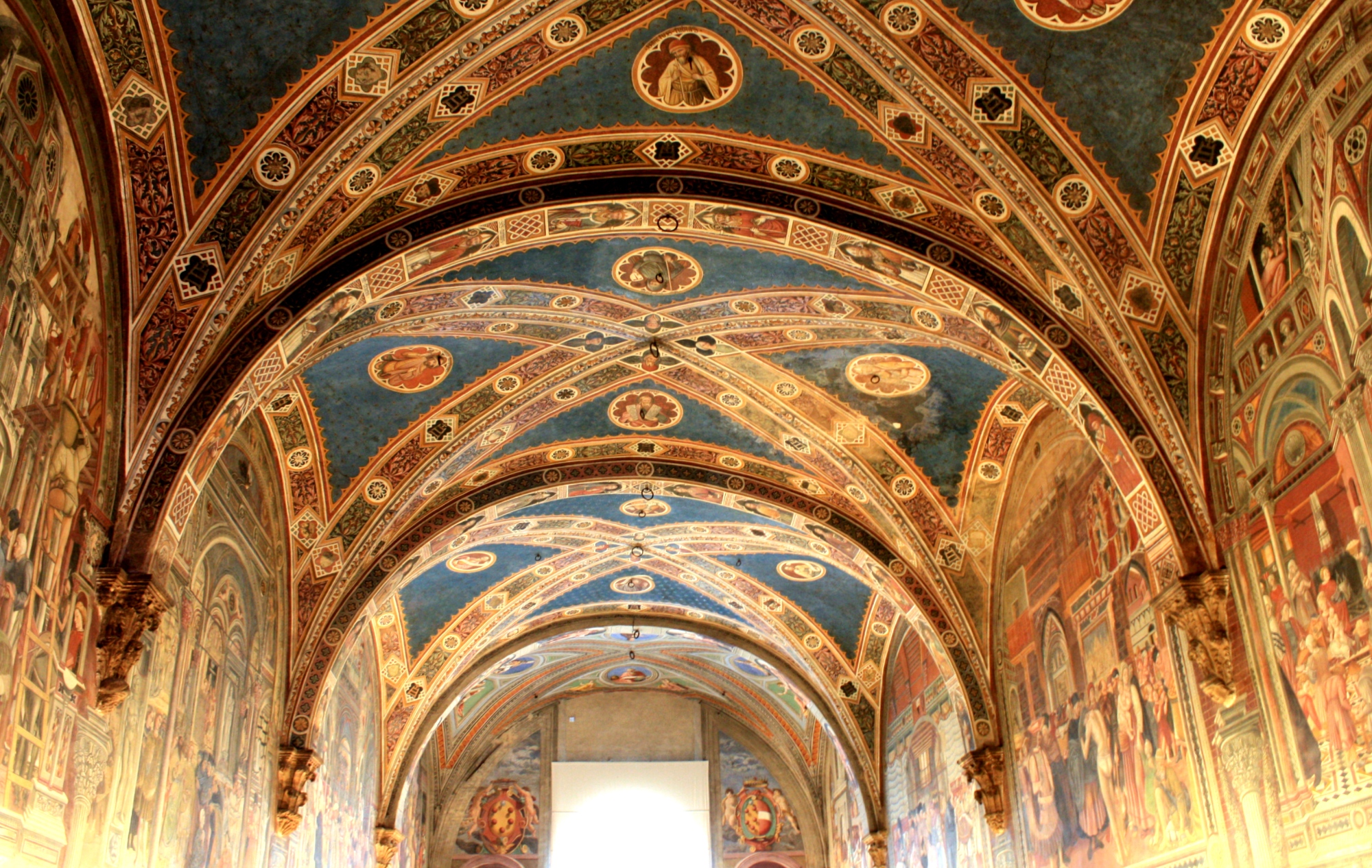
Travel this itinerary on foot, on horseback or by bike
Silence, nature, beauty. Travelling the via Francigena is an experience that engages both the sense and the heart: rediscovering the medieval pilgrimage route on foot, on horseback or by mountain bike means gifting yourself a true holiday off the beaten track. One of the more fascinating stretches of the Francigena in Tuscany is definitely the route that winds through the Siena province: 120 kilometres from San Gimignano and Radicofani, passing by medieval villages, rolling hills, rows of cypress trees and shaded forests to rest in.

We start in San Gimignano, home to 16 still-standing towers built in the Middle Ages as a symbol of power; the city was established right on the Francigena, which passed through the hills in order to avoid the swampland below.
Get lost as you wander through the narrow streets, climb Torre Grossa to admire the whole of the Valdelsa and bask in the beauty of the stunning frescoes inside the cathedral, home to works by Domenico Ghirlandaio and Benozzo Gozzoli, as well as an extraordinary Last Judgement by Taddeo di Bartolo.
Buy yourself a glass of Vernaccia and spend the night inside the city walls: after the sun sets, San Gimignano empties of visitors and becomes a small paradise suspended in time.





As we walk to Monteriggioni, we come to Abbadia a Isola, a village founded around an abbey built in the year 1000 on the Francigena, in an area that at the time was a swampland: for this reason, the church seemed as if it were floating on the water, a vision you can still see today in one of the frescoes.
Next, we’ll cross through gold-hued wheat fields and a forest before arriving in Monteriggioni, a fortress built in the 1200s to defend the Republic of Siena from the Florentines and the last stop for pilgrims before getting to the Palio city.
Dante himself stayed here, which in Inferno he described as “crowned with towers”.

Following the Francigena through Siena, we walk from Porta Camollia to Porta Romana: a must-see is Santa Maria della Scala, where pilgrims took refuge to rest, receive medical attention and eat before continuing on their way.
In the Middle Ages, this complex opposite the cathedral was one of the largest hospices in Europe and was a veritable crossroads of cultures: still today, it vaunts incredible artistic treasures, including frescoes by Domenico di Bartolo in the Sala del Pellegrinaio. It is also home to the original sculptures by Jacopo dells Quercia for the Fonte Gaia in piazza del Campo, which were replaced in the early 20th century to protect them from the elements.






Leaving Siena behind us, the Francigena continues to Monteroni d'Arbia, Buonconvento and San Quirico d'Orcia, with its splendid collegiate church midway between Romanesque and Gothic. In the countryside around San Quirico, you can admire two of the most famous images of Tuscany: the small thicket of cypress trees in I Triboli and the Chapel of the Madonna di Vitaleta.
Before the Francigena winds beyond the Siena territory, there is still so much beauty to experience. The road leads to Bagno Vignoni and its piazza delle Sorgenti, home to a large pool in the centre of the village thanks to which a fog descends upon the surrounding streets during the night: take a relaxing break at the town’s hot springs or enjoy a glass of Orcia DOC and recharge for the rest of the journey.
The last stretch leads to Radicofani and Acquapendente, one of the most unforgettable parts of the Francigena, surrounded by a sea of hills that seem caressed by the wind, dominated from above by Monte Amiata.